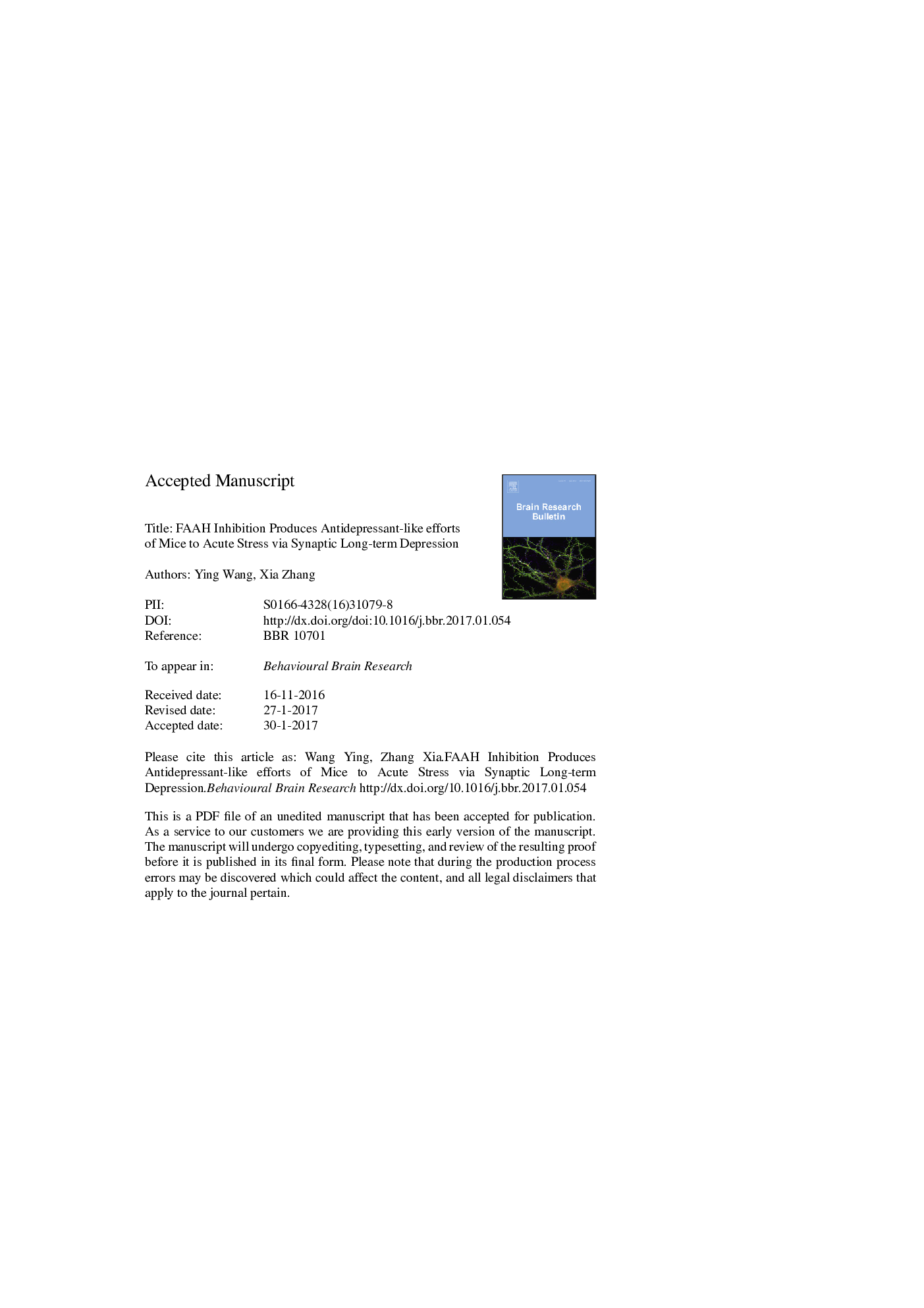| Article ID | Journal | Published Year | Pages | File Type |
|---|---|---|---|---|
| 5735215 | Behavioural Brain Research | 2017 | 21 Pages |
Abstract
Recent studies have shown that inhibition of fatty acid amide hydrolase (FAAH), the major degradative enzyme of the endocannabinoid N-arachidonoylethanolamine (AEA), produced antidepressant behavioral responses, but its underlying mechanism is not clear. Here we find that a systemic administration of the FAAH inhibitor PF3845 or an intra-CA1 application of AEA elicits an in vivo long-term depression (LTD) at excitatory glutamatergic CA3-CA1 synapses of the hippocampus. The PF3845- and/or AEA-elicited LTD are abolished by the LTD-blocking peptide Tat-GluR2. PF3845 significantly decreases passive behavioral coping of naïve mice to acute inescapable stress, which is also abolished by Tat-GluR2 peptide. However, PF3845 does not significantly affect sucrose assumption ratio of mice receiving chronic administration of corticosterone. These results suggest that FAAH inhibitors are able to produce antidepressant effects in naïve animals in response to acute stress through LTD at hippocampal glutamatergic CA3-CA1 synapses.
Keywords
AEAN-arachidonoylethanolamineFAAH inhibitorFAAH2-arachidonoylglyceroldepolarization-induced suppression of inhibitionDSIDSEFSTmagl2-AGGFAPfEPSPsForced swimming testStressFatty acid amide hydrolaselong-term depressiondepolarization-induced suppression of excitationAntidepressantmonoacylglycerol lipaseLTDHippocampusfield excitatory postsynaptic potentialsCORTCorticosterone
Related Topics
Life Sciences
Neuroscience
Behavioral Neuroscience
Authors
Ying Wang, Xia Zhang,
